CAROLINGIAN
DEVELOPMENT
Brief
history of the area. The Franks were a Germanic people who invaded
Roman-held Gaul (present-day France) in the 3rd
and 5th
centuries. They were converted to Christianity by about the 6th
century. Their second ruling family was named the Carolingians.
That family under the leadership of Pepin the Short took control in
751. Pepin's son was Charlemagne (742-814), who expanded the
Frankish territories (western German area). He was crowned Emperor
of the West by Pope Leo III, after conquering most of western
Christendom. The papal connection was undoubtedly due to the
religious interests of Charlemagne, among which were architectural
ideas culminating in the designing of an "ideal" monastery,
based on modular
sizes. Actually, Charlemagne seemed to follow the near divine
outlook espoused by Constantine. In the midst of construction of his
Palace Chapel, 789 to be exact, he declared: "Under the
everlasting reign of our Lord Jesus Christ, I, Charles, am by the
grace of God and the gift of His mercy King and Ruler of the Frankish
Empire and the devoted protector and humble helper of holy
Christendom".
Charlemagne
and his son Louis the Pious were patrons of learning and literacy
throughout their empire. They fostered a cultural revival known as
the Carolingian renaissance. Undoubtedly, Charlemagne viewed the
accomplishments of law and order and cultural development of the
Romans as models to emulate and became titular head of what future
historians would call the Holy Roman Empire.
The
kingdom was split into three parts, under the control of each of the
three sons of Louis. The eastern part became Germany and remained in
family hands until 911, with the western part eventually becoming
present-day France; it remained in Carolingian control until 987.
German
Romanesque churches were often planned on a large scale. Many of them
are very high and have an apse or sanctuary at each end. Numerous
round or octagonal towers create a picturesque silhouette.
AACHEN,
GERMANY
The
city today, site of Charlemagne's Palace and Chapel, in western
Germany, is known as Aachen. When the area was under French
control, it was known as Aix-la-Chapelle. Its history goes back at
least to Stone Age times, when there was a flint stone mine nearby.
Actually, a complete stone workshop has been excavated, dating back
to about 2,900 B.C.E., making the site the oldest technical monument
in Germany.
Hot
springs in the area attracted whom else but the Romans. They were
really into those mineral water spas - perhaps it's what kept their
fighting spirit up - early versions of Gatorade.
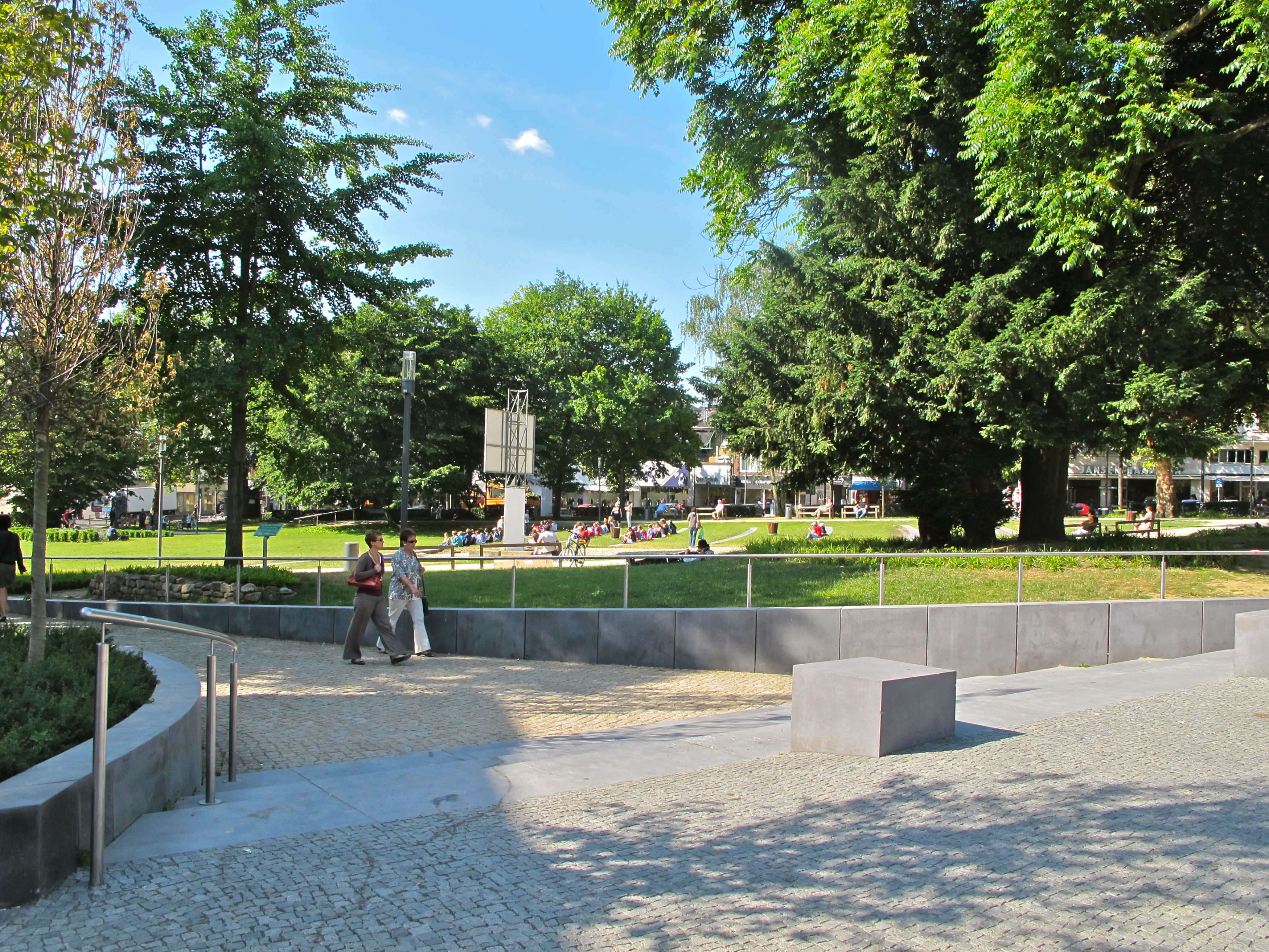

A
city of parks and open spaces (“platz” in Germany, “place” in
France, “praka” in Greece, “plaza” in Spain, “piazza” in
Italy – all seemingly sharing a similar root.).
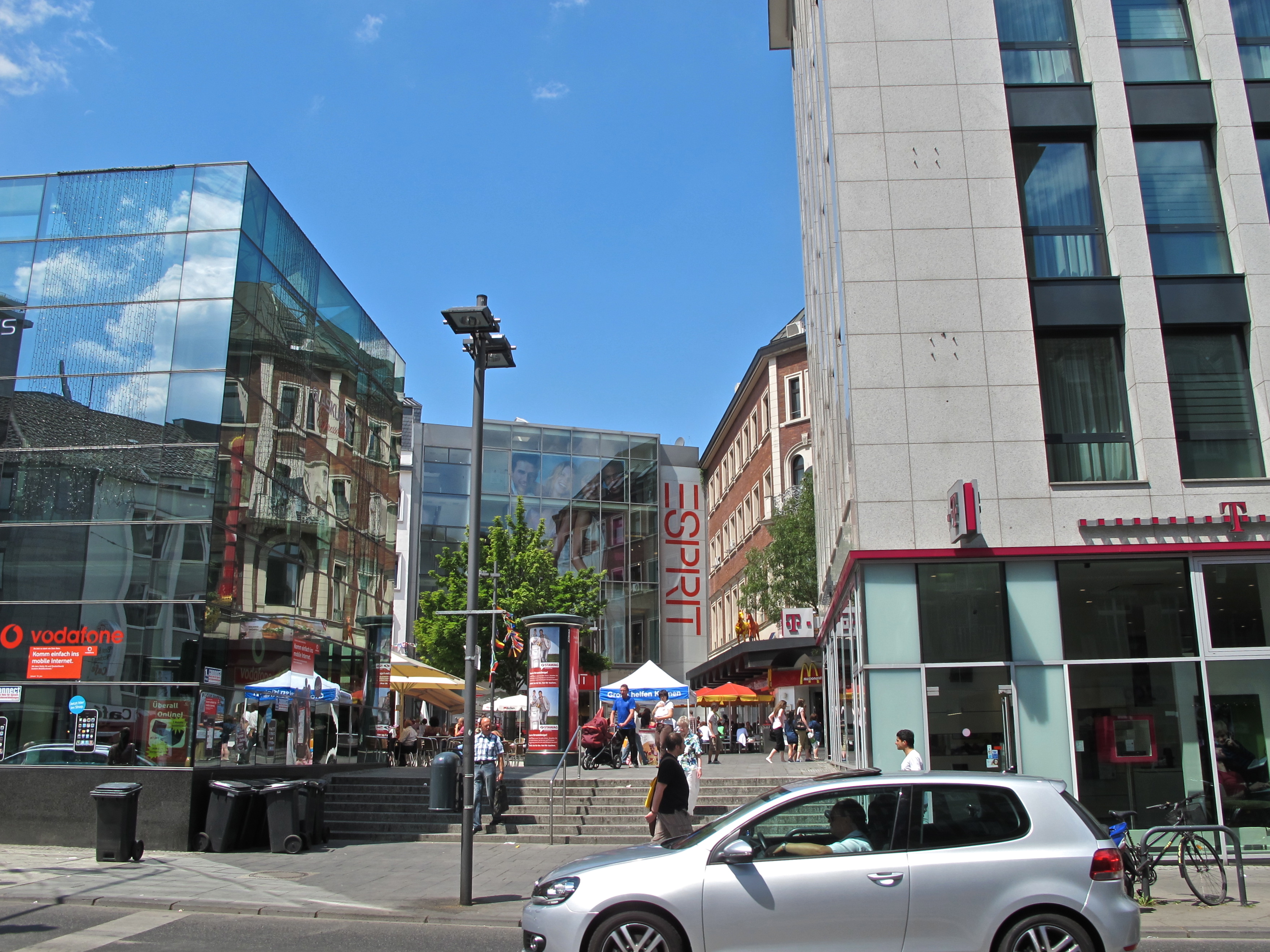
A
thriving commercial sector.

As
in almost every Germany city – a pedestrian way, free of vehicular
traffic.
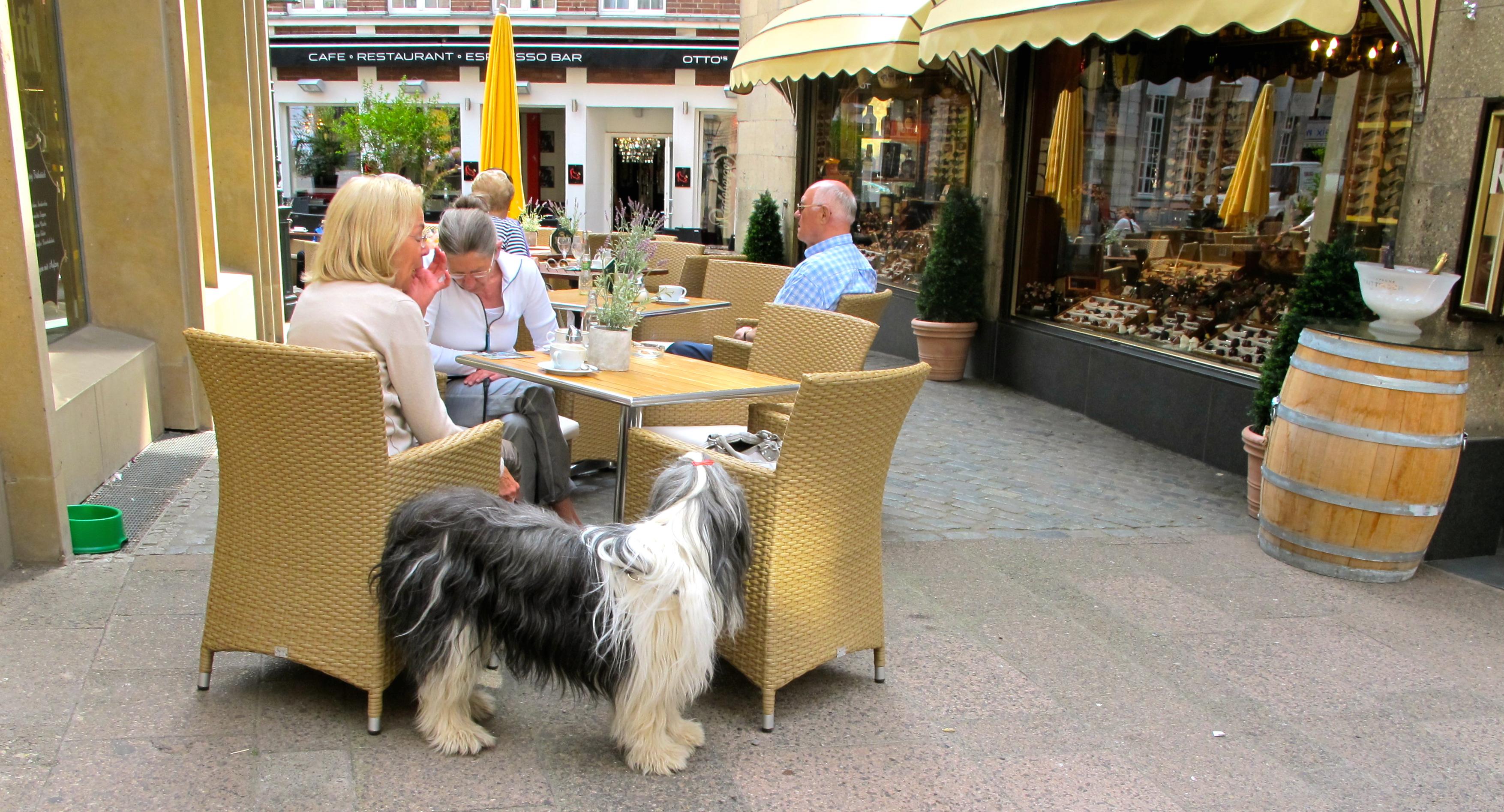
Outdoor
eating, drinking, snacking, typical of just about every European
community, and the concept is picking up some converts in the United
States.
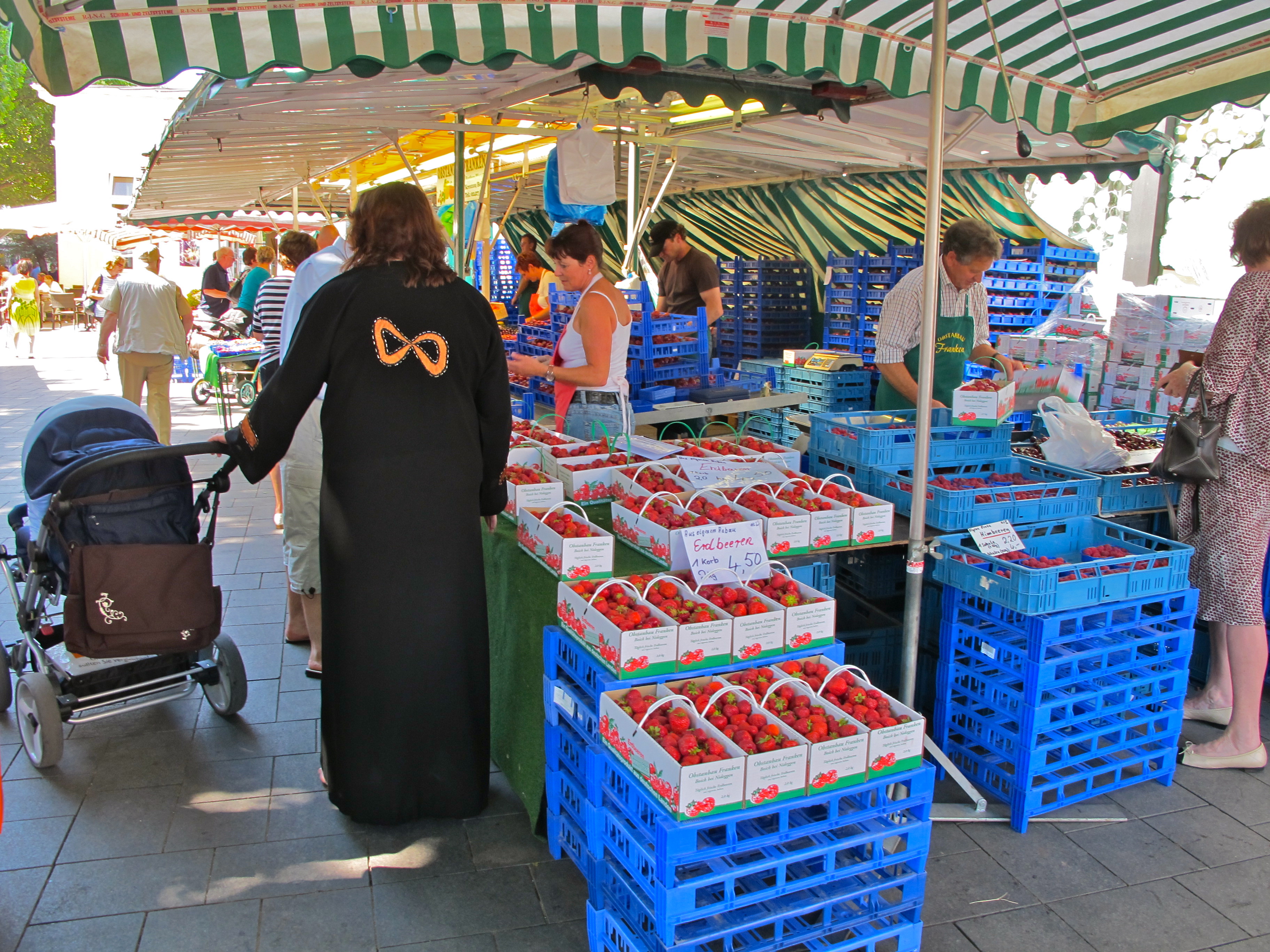

Fruit
and flowers prevail out of doors in all the warm months in Europe.
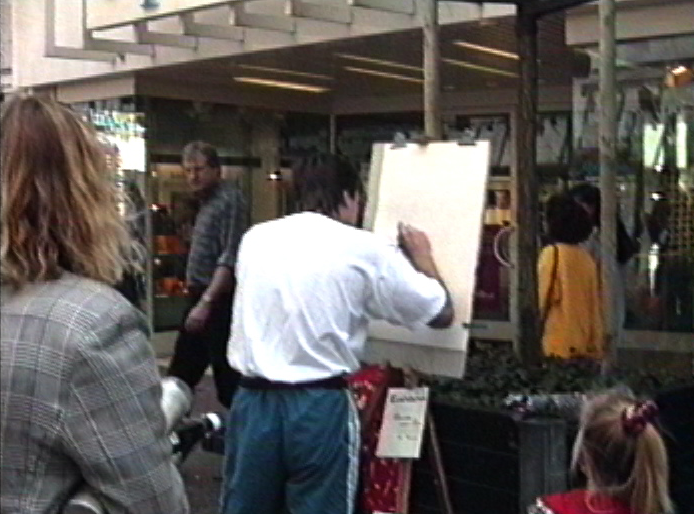
In
the pedestrian way – an artist, sketching.
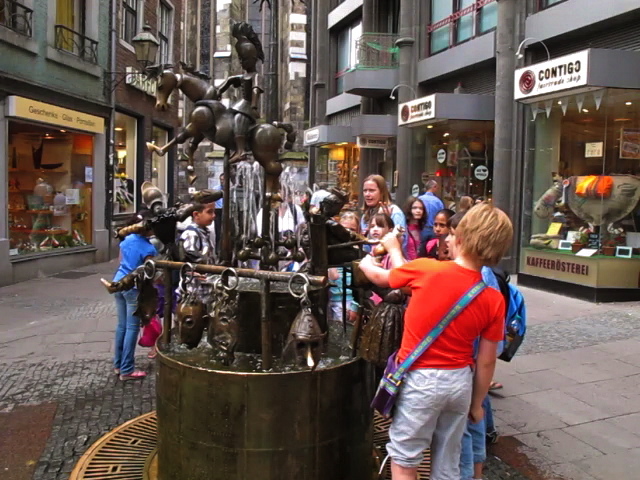
An
interactive fountain. But what is most engrossing just before you
get to the Charlemagne complex, is a grouping of sculptural pieces
surrounding a fountain. Typical wry German humor, but so on the
money (so to speak).
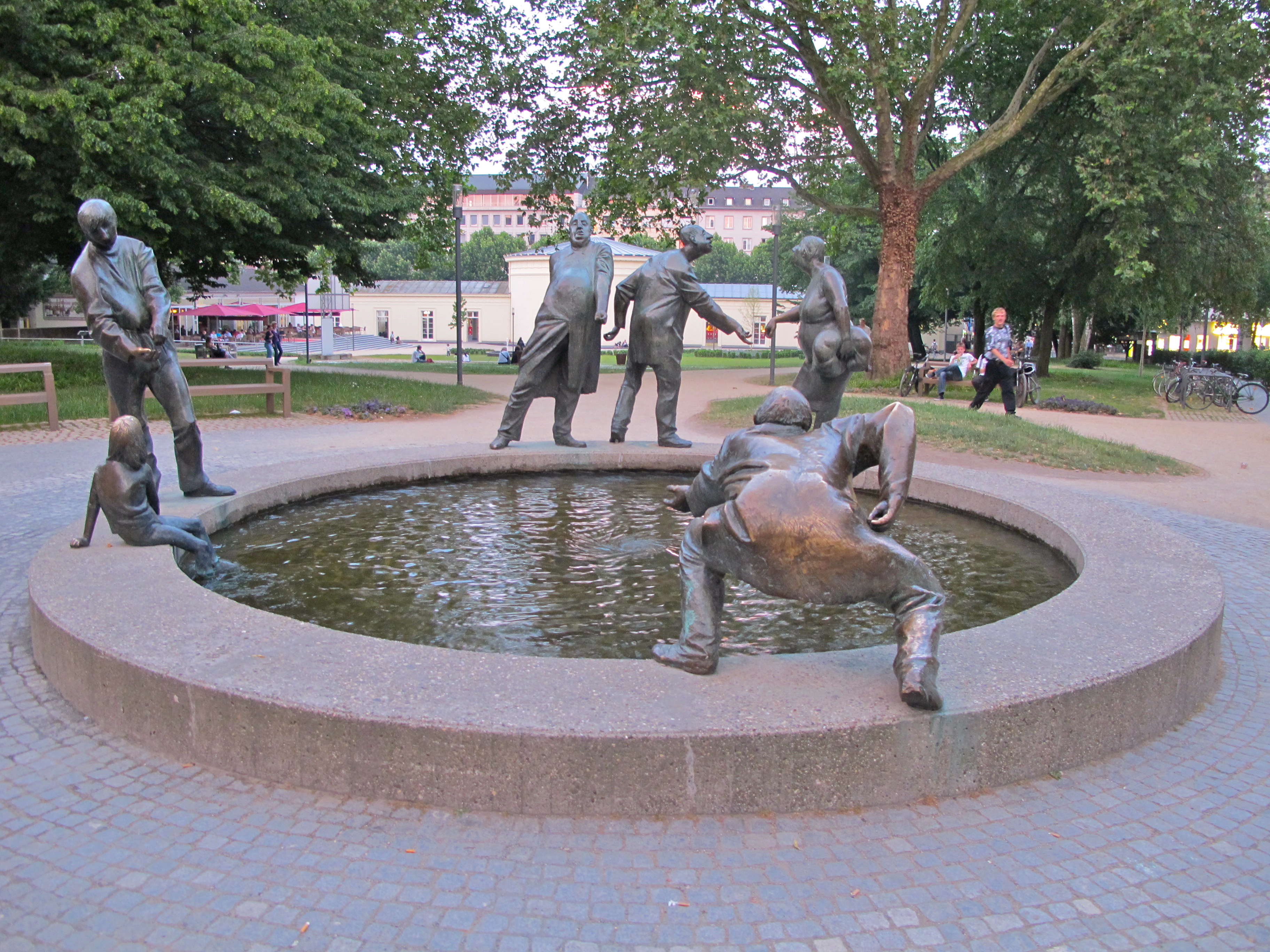
In
Aachen there is this fountain (1977) by Karl-Henning Seemann, a
German sculptor born in 1934, who has created public images
throughout Germany. Titled: “circulation of money,” this
fountain grouping is located in a park on the corner of Hart Street
and Ursulinerstraße, in proximity to Charlemagne's Chapel. The
following is a descriptive quote: “The six bronze figures on the
edge of the fountain show how to handle money; the centrifugal
movement of water is the steady flow of money.”
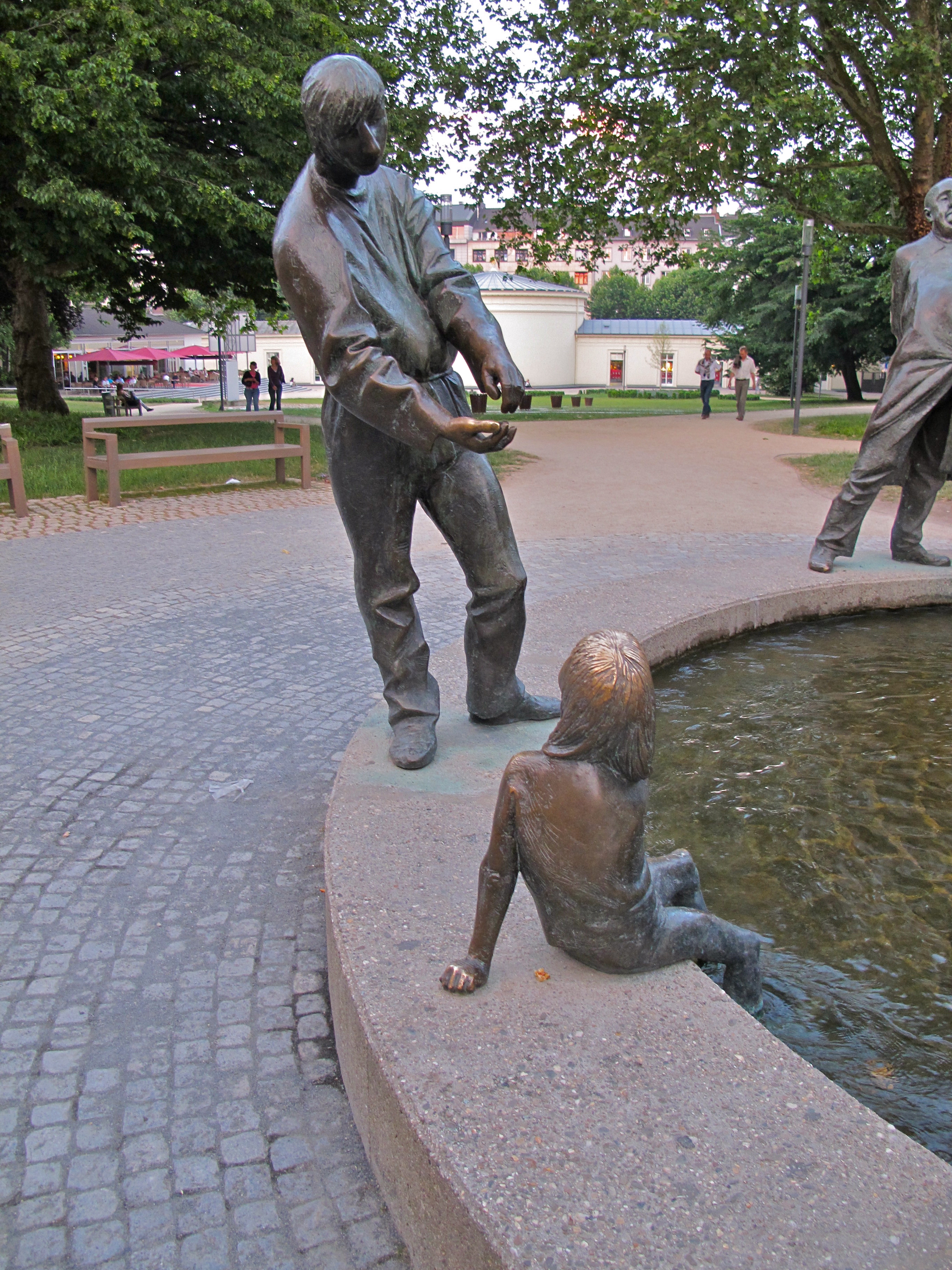
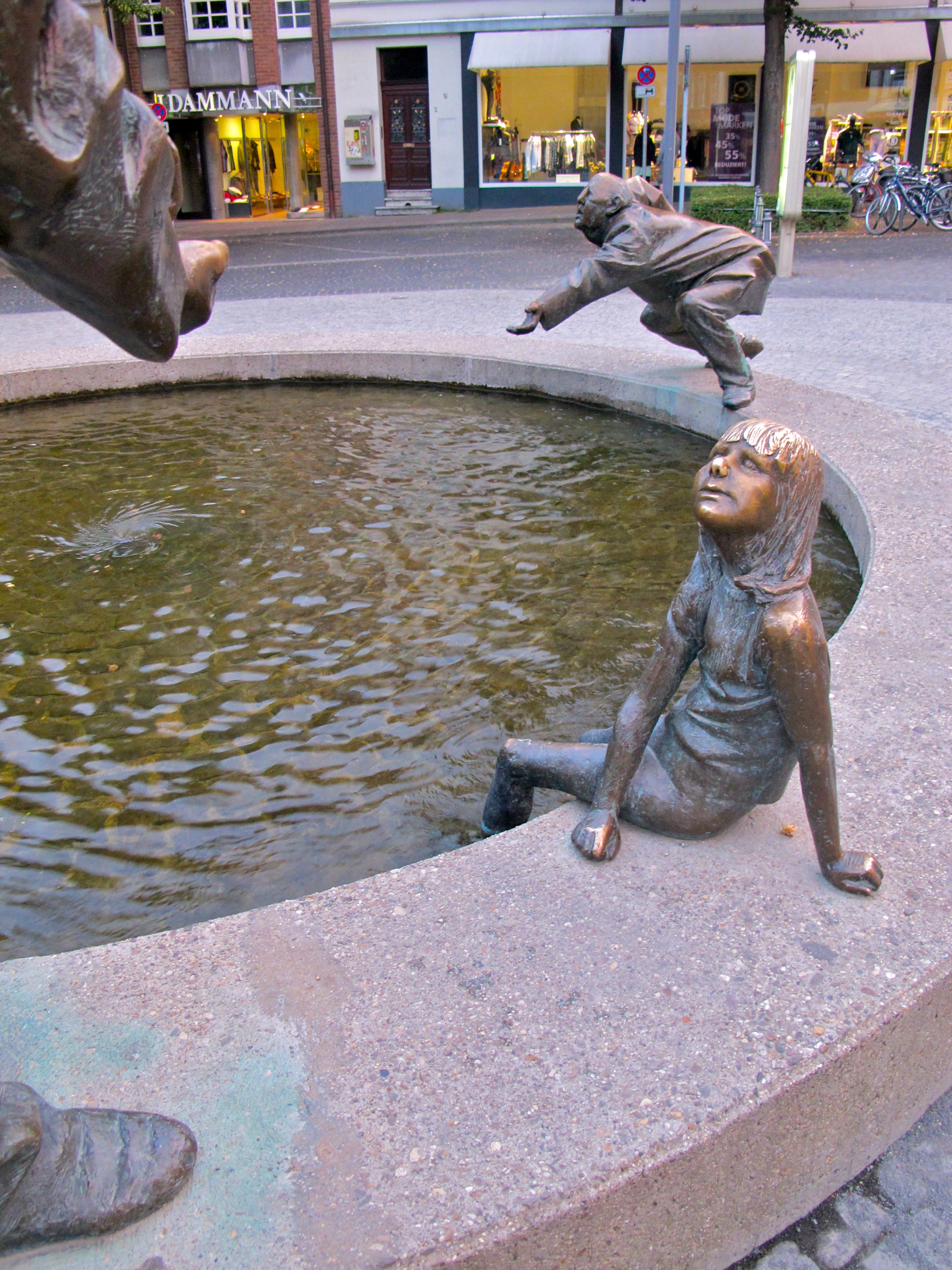

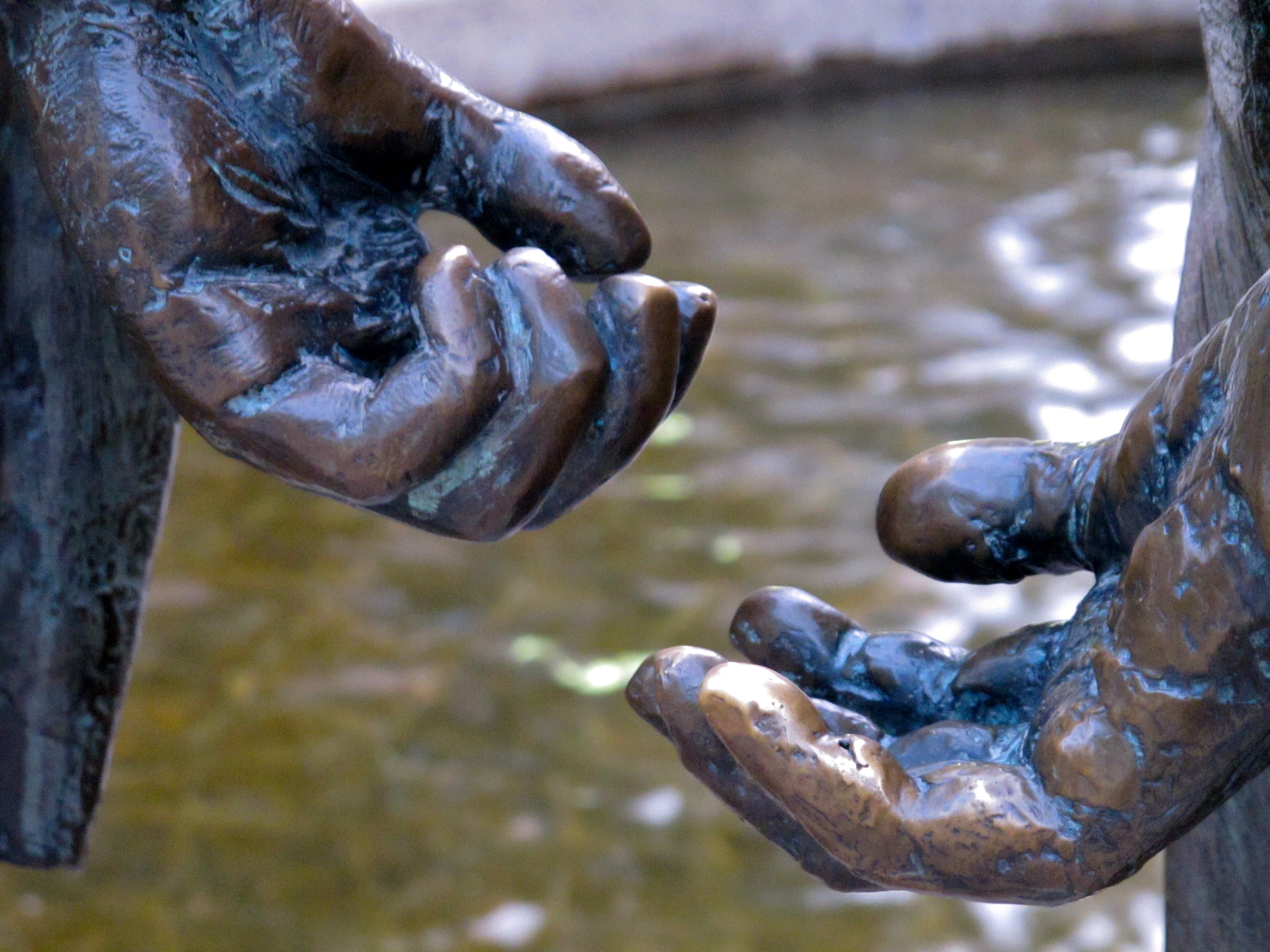
But
a simple interpretation goes far beyond that benign description.
This is public graft on the take, one behind-the-back handoff to
another, around and around, beginning with a father showing his child
a few coins, a child whose countenance bespeaks innocence of what is
about to occur later in life. Then a grubby politician taking a few
coins from a constituent (taxes?) and passing them behind his back to
a crony. Unless, of course, the woman is taking
the money from the politician's “stash,” in exchange for her
vote.
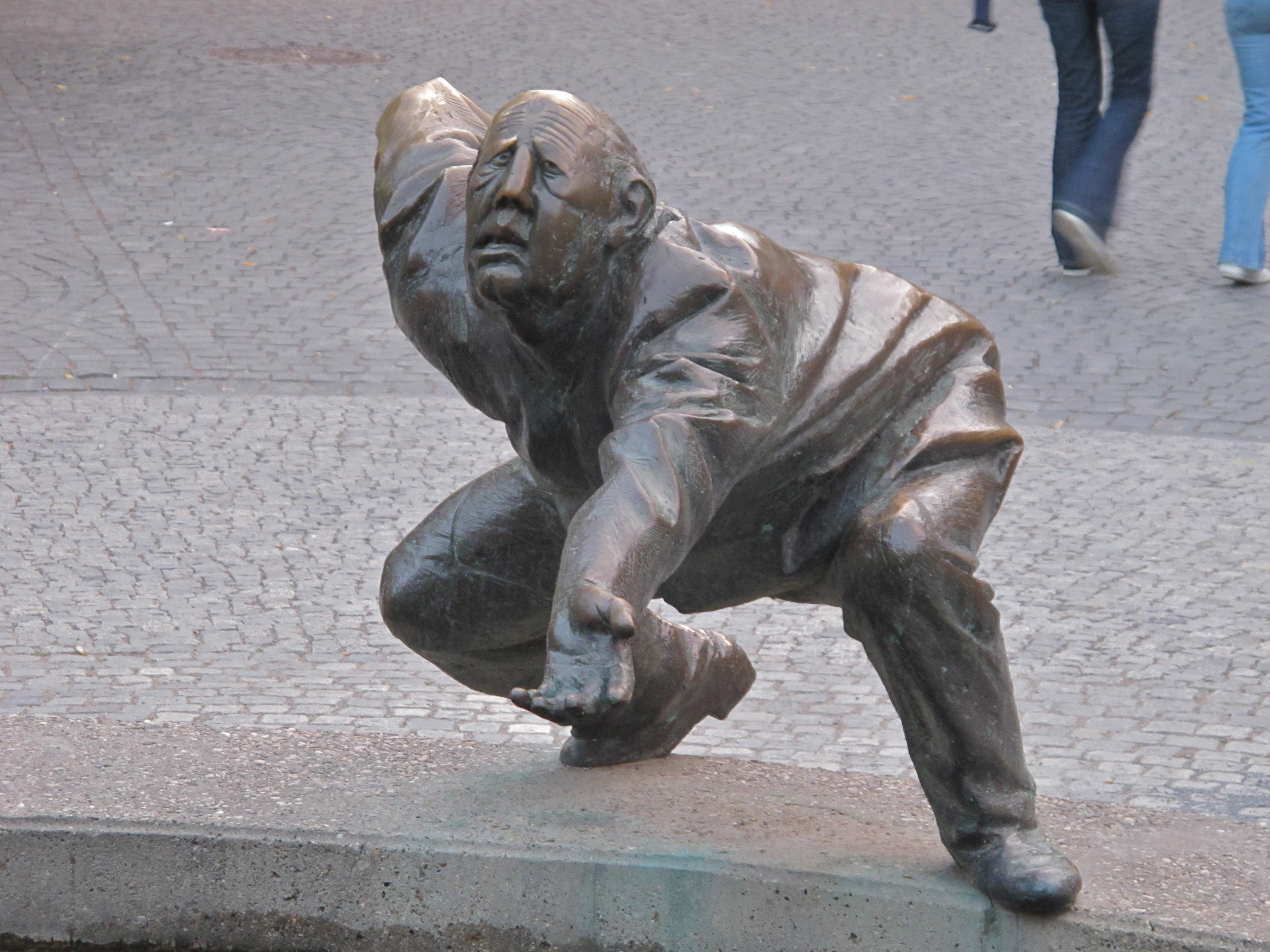
Across
the water, a looming money-grabber is seen begging for a piece of the
pie. All in the eye of the beholder? You be the judge. Germany
has quite a few symbolic sculptures on its urban landscape,
infinitely more meaningful than pseudo-sophisticated gibberish found
elsewhere.
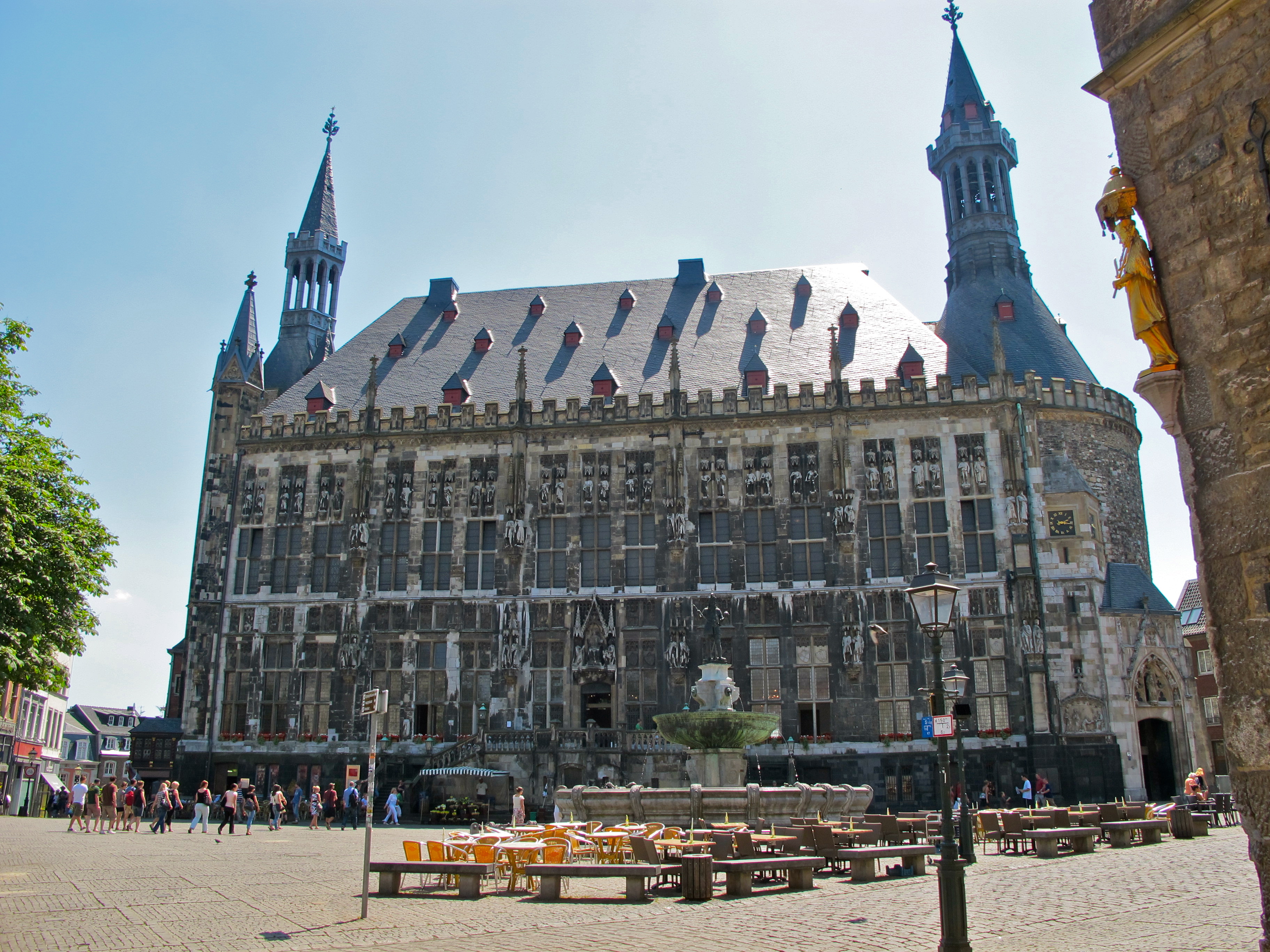
Locals
took over the ruined palace of Charlemagne in the early 14th
century, and built a gothic town Hall on some of its foundations.
The 17th and 18th centuries brought about
Baroque “renovations” in keeping with the times. There had been
a fire in 1656, and again in 1883. The building features 50 statues
of German rulers on this, its north facade. Of those 50, 31 kaisers
(kings) were crowned here in Aachen, in Charlemagne's Cathedral.
©
Architecture Past Present & Future - Edward D. Levinson, 2009
















